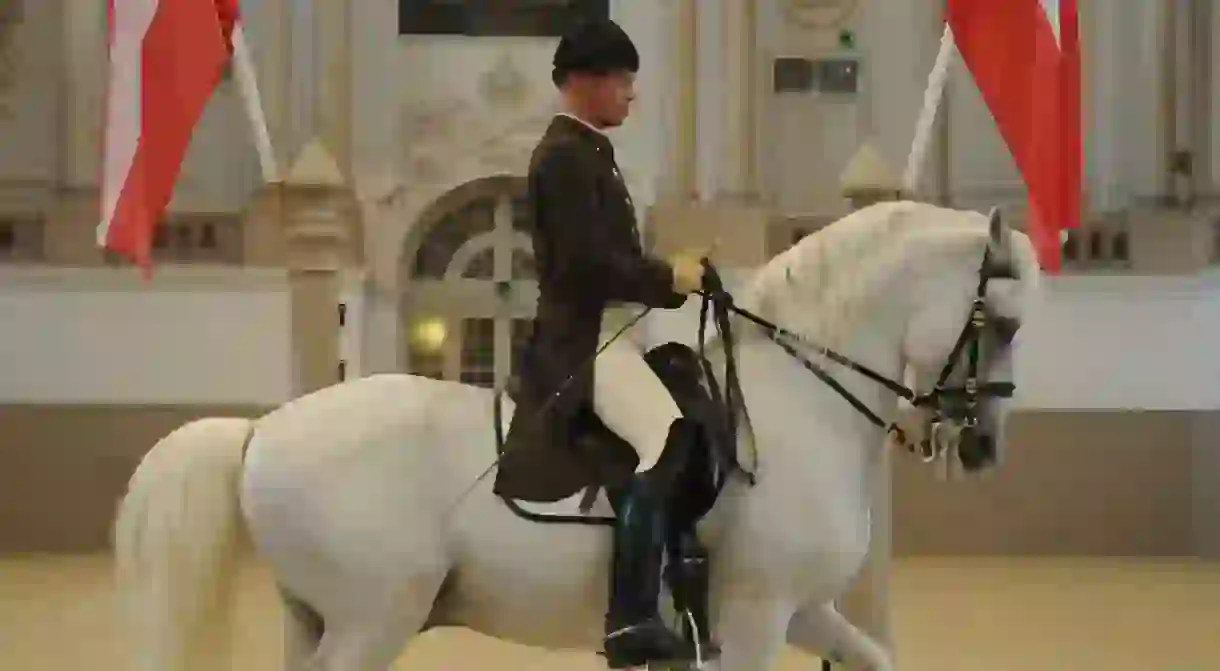Peek Inside One of the World's Oldest Riding Schools

The Spanish Riding School of Vienna, located in on the grounds of the Hofburg Palace, is a paragon of tradition and one of the city’s proudest historical monuments. It may seem strange for this quintessentially Viennese landmark to have the word ‘Spanish’ in the name, but this institution is 100% Austrian – the school’s name relates to the horses from the Iberian Peninsula that were originally used during the 16th century. With a legacy dating back over 450 years (making it the world’s longest practising institution), this proud equitation establishment continues to reign on today, delighting tourists and offering a fantastic opportunity to wannabe riders.
A brief history
1565 is the earliest date on which information on the school can be found, with a document stating that the court wanted to invest money to build the Thumblplatz in the gardens. However, the school as it is seen today was created 1729, when Emperor Charles VI, of the notorious and long-reigning Habsburg Monarchy, requested for a ‘winter riding school’ to be erected on the grounds of his palace. Designed by Austrian architect Josef Emanuel Fischer von Erlach, whose other designs include the Karlskirche and the Austrian National Library, the magnificent structure was intended as a platform for riders of the Spanish Riding School to train their Lipizzaner stallions and present their skills to an international audience during public performances. At first, such performances at the riding school were purely viewed by members and guests of the Royal Court, however, this was extended to the public in the turn of the century. Maria Theresia, who took the throne in 1740, put on various carousels, masquerades, jousts and court festivities in the Winter Riding School.

The riders
It is no easy feat to become a fully qualified rider of the Vienna Spanish Riding School, with the men and women having to endure a rigorous training process before earning their status as a ‘Chief Rider.’ Initially, the students learn then in and outs of equestrian care and maintenance, including how to correctly handle all the necessary equipment; saddles, bridles etc. The journey from ‘eleve’ to fully fledged rider takes approximately 12 years in total, with many dropping out on the way. On September 9, 2008, for the very first time, two young women started their training with the Spanish Riding School.


The horses
Similarly to the riders of the school, the horses have to undergo a strict training process that begins when the stallions are just four years old. They are transferred from their birthplace to the training centre in Heldenberg. Only the very best stallions make the final cut.

Visiting the school
On UNESCO’s list of intangible cultural heritage of humanity, the school continues to be one of the city’s proudest landmarks and is a hugely popular tourist destination. One of the most spectacular events is the ‘Tribute to Vienna’, where the magnificence of the horses is combined with another quintessential element of Viennese culture; classical music and the Fête Impériale – a summer ball (pictured below). The event is designed to transport you back to Imperial Vienna, with an evening of presentations by the school and performances of Levade and Johann Strauß. Tickets and details on the events can be found here.














